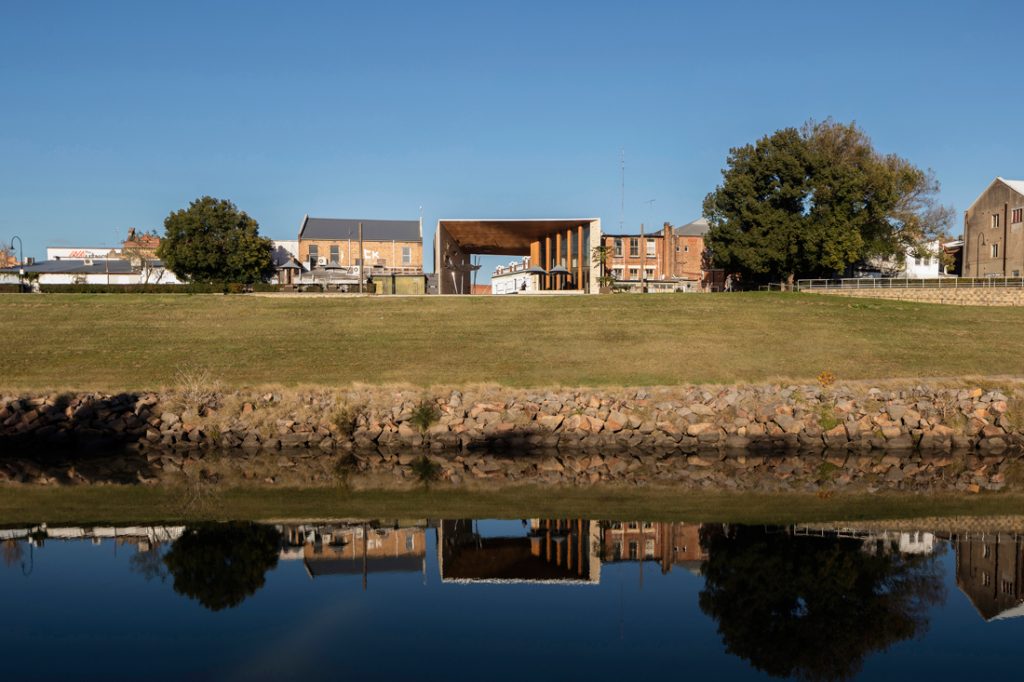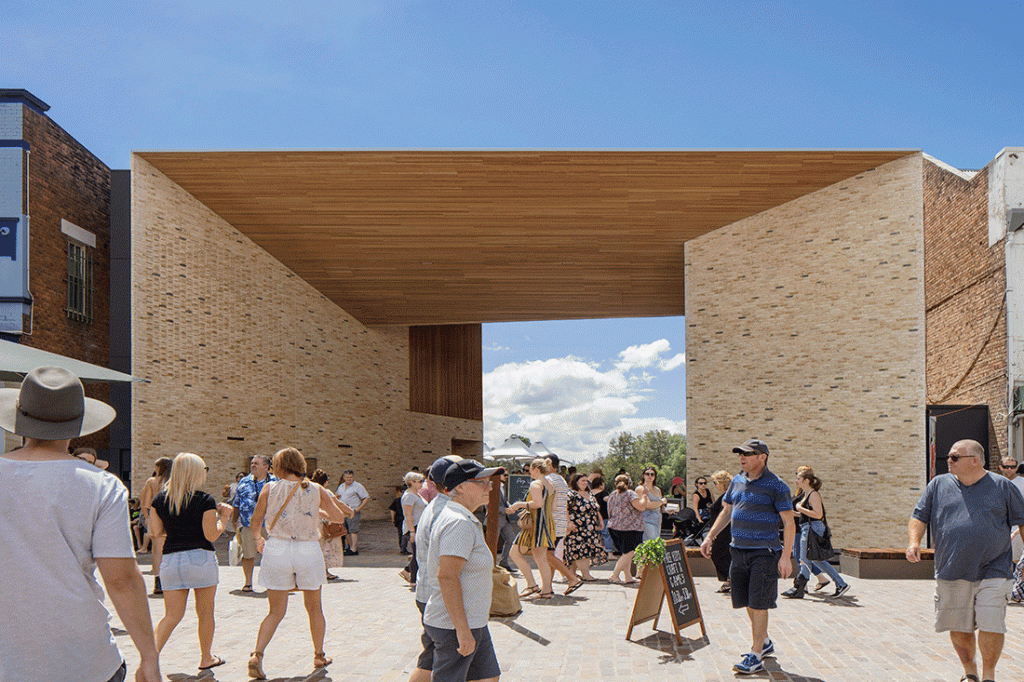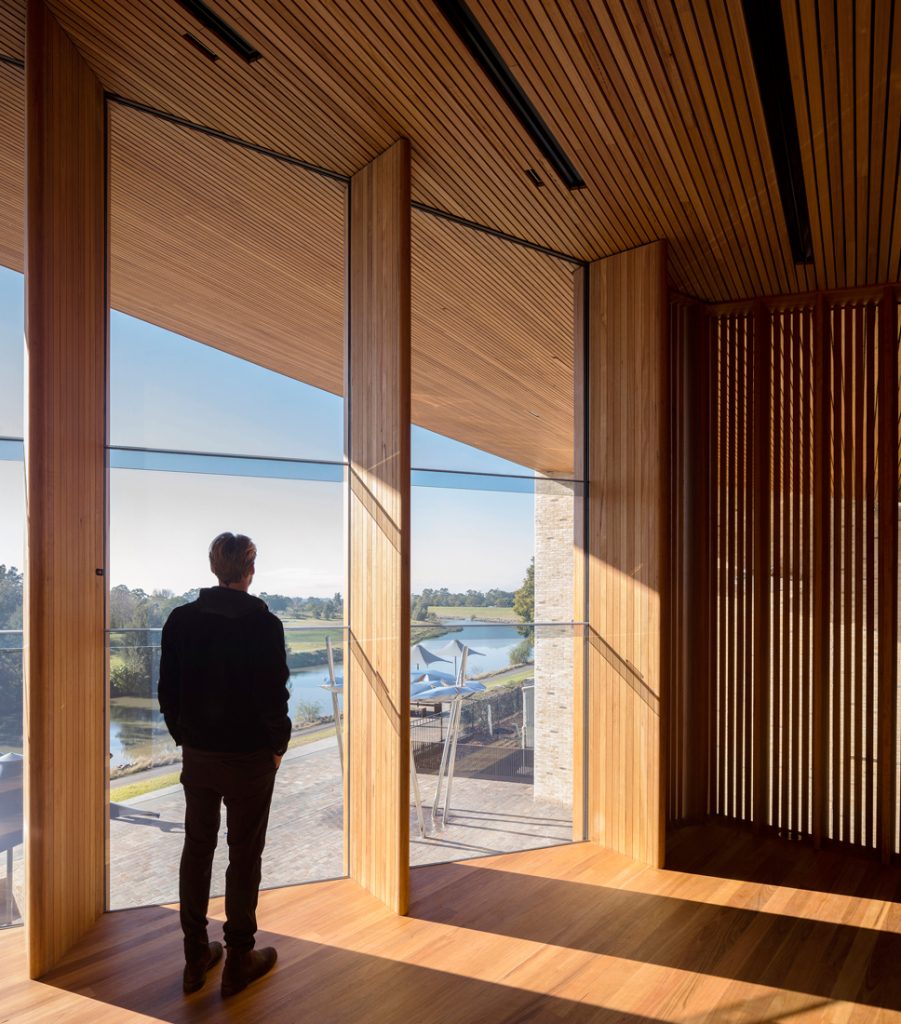Maitland RIverlink, by CHROFI with McGregor Coxall, shows how design can be a powerful instrument in a community. It won the INDE.Awards’ 2019 Building trophy, partnered by Cult.

Photo by Brett Boardman
August 23rd, 2019
Regional design stimulates many effects within a region. It starts with contributing to new perspectives for an area, changing perceptions and creating a pathway for long-term development and transformation. Regional design is also instrumental in building local networks and relationships, helping people bond, building community, uniting stakeholders and creating favourable circumstances for collaborations.
In Maitland, New South Wales, a new public project recently created a stir for its unique form and impact on community and commerce. Maitland Riverlink – a building designed by CHROFI with McGregor Coxall – has been lauded for its ability to revitalise the region’s central business precinct and bring in tourists and visitors to the town.

Photo by Brett Boardman
The building creates a strong architectural link and lends a contemporary identity to the town. It’s no wonder the project bagged gold at the INDE.Awards in The Building category presented by CULT. We explore how the public project acts as a catalyst for change in Maitland.

“As a practice, we have always been focused on high impact public projects that resonate with the local culture and community,” says CHROFI Director, Tai Ropiha. “We are thrilled that the building has been well received and is changing how the Maitland community engage with the river.”

Photo by Simon Wood
The Maitland Riverlink building forms a contemporary sculptural gateway arch, creating a link between the town’s main street and the Hunter River. The town centre had originally turned its back to the river creating a disconnect from its main commercial and community activities. CHROFI identified an opportunity to reframe the dynamic, working closely with McGregor Coxall and the Maitland City Council to find buildings that could be purchased and redeveloped in the area. With the Riverlink building, the design team have been able to revitalise a 270-metre-long retail and business precinct in the city centre.
“The project is a response to the ongoing cultural, planning and economic impacts of periodic flooding of the Hunter River. The building aims to reframe the relationship to the Hunter River – from threat to a community asset. It brings new value for the regional centre of Maitland, both in terms of its identity and its assets,” adds Ropiha.

At the local Riverlights festival, Ropiha recalls being thrilled at the sight of how the new building is encouraging a re-occupation of the riverfront en masse. From a design perspective, the architect feels that small-town local architecture should be supported. He adds, “The key to its success is the way a project identifies the special and memorable qualities of the place, using these to imagine a totally unique response that still resonates with the local culture and community, celebrating the particularities of the locality.”
In fact, it was this grounding in Maitland’s culture and sense of community that quickly swept aside the initial mistrust that many of the townspeople felt. The architects worked around a flexible, communally-oriented program and chose materials that made this sense of ownership possible. “For our practice it was proof of concept that the approach we took to the TKTS Ticket Booth in the middle of Times Square can be equally effective in a small town in regional NSW – to look beyond a given brief for unlocked meaning and value, often never even considered by the client, as was the case here. Something from nothing.”

Photo by Brett Boardman
Today the building acts as a public living room for the community. It reactivates an unused part of town, drawing locals back to the river, an essential part of Maitland’s heritage. Tourism is flourishing too, boosting business and commerce in the region. The Maitland Riverlink project sets the bar high, showcasing that through investment in community infrastructure, there is potential to enrich and rejuvenate regional towns and cities in Australia.
A searchable and comprehensive guide for specifying leading products and their suppliers
Keep up to date with the latest and greatest from our industry BFF's!

Schneider Electric’s new range are making bulky outlets a thing of the past with the new UNICA X collection.

BLANCOCULINA-S II Sensor promotes water efficiency and reduces waste, representing a leap forward in faucet technology.

Cult has a new home, albeit temporary, and it’s sensational with masses of room to move, beautiful furniture and accessories to explore.

Another Sydney project has taken out the top prize this year in Singapore, with a wide range of other winnings works from around the world.
The internet never sleeps! Here's the stuff you might have missed

In Singapore, old meets new and does it with style and grace in FARM’s culturally appropriate, site-specific design. It’s a place that provides connection for everyone who visits.

In a prestigious design competition for a site in Kharkiv, Ukraine, Jansen Che has been announced as one of three winners at the competition stage.